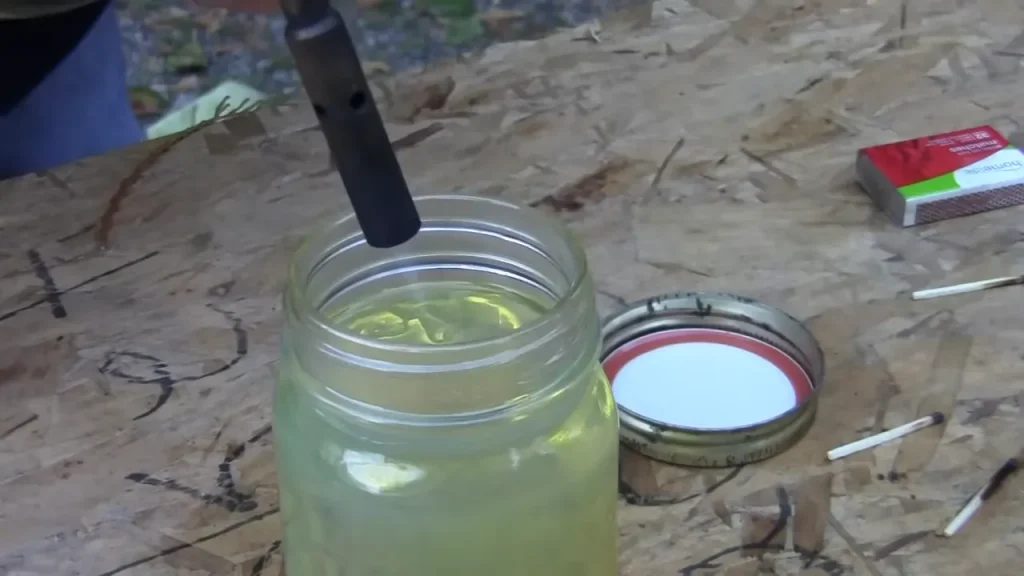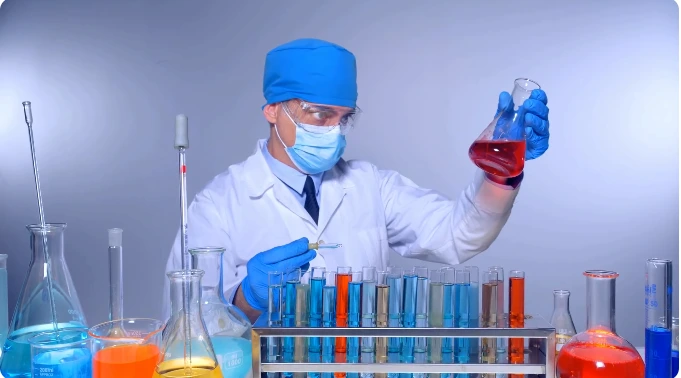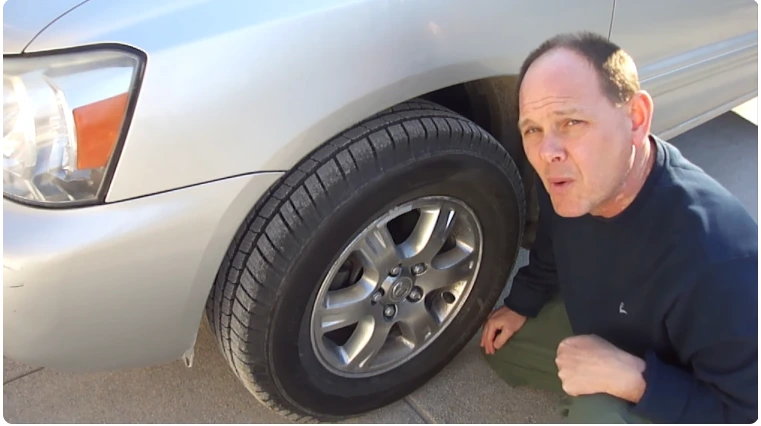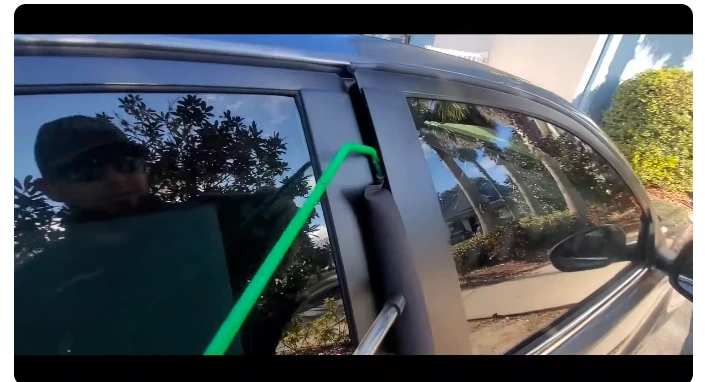What Color Is Gasoline? (Unveiling the Truth)
When we think of gasoline, we often conjure up images of filling stations, fuel pumps, and the distinct smell that accompanies them. But have you ever wondered about the color of this essential fuel that powers our vehicles? Surprisingly, the answer is not as straightforward as one might expect.
Contrary to popular belief, gasoline itself does not have a specific color. In its purest form, gasoline is actually colorless and odorless. However, the fuel we encounter at gas stations is often tinted or dyed for practical reasons and safety measures.
Fuel manufacturers and distributors add dyes to gasoline for identification and differentiation purposes. These dyes help distinguish different grades of gasoline, such as regular, premium, or diesel, as well as track and prevent unauthorized use or contamination. The addition of dyes ensures that each type of fuel is easily recognizable, both during production and when it is dispensed into vehicles.
In this article, we will explore the reasons behind the colored appearance of gasoline at the pump, delve into the purpose of these dyes, and discuss their significance in the fuel industry. By unraveling the mystery surrounding the color of gasoline, we aim to enhance your understanding of this everyday substance that keeps our engines running.
How To Recognize Gasoline
Recognizing gasoline is a crucial skill, especially when you need to handle or identify the fuel in various situations. While gasoline itself is colorless, it is often mixed with additives that give it a specific appearance and odor. Here are a few key factors to help you recognize gasoline:
1. Color: Gasoline typically has a light yellowish or amber color. However, it is important to note that the actual color of gasoline can vary slightly depending on factors such as the specific blend, brand, and any dyes added by the manufacturer.
2. Odor: Gasoline has a distinct, pungent odor that is easily recognizable. It is often described as a combination of sweet and chemical-like aroma. This smell is primarily due to the presence of volatile hydrocarbons in the fuel.
3. Labeling and Identification: Gasoline is usually labeled clearly at gas stations, either on the fuel dispenser or on the pump itself. Look for labels such as “Unleaded,” “Regular,” or “Premium” to identify the type of gasoline being dispensed. Diesel fuel, which is not compatible with gasoline-powered vehicles, is typically labeled separately.
4. Safety Features: Gasoline pumps have safety measures in place to ensure that you select the correct fuel. For example, gasoline nozzles are usually smaller than diesel nozzles, preventing them from fitting into the filler neck of a diesel vehicle. This physical difference helps avoid accidental fueling with the wrong type of fuel.
Gasoline Color And Octane Grade
Gasoline color and octane grade are two distinct aspects of this vital fuel. Let’s explore each one:
1. Gasoline Color
As mentioned earlier, gasoline itself is colorless. However, fuel manufacturers often add dyes to gasoline for practical purposes. These dyes impart a specific color to the fuel, making it easier to identify and differentiate between different grades or types of gasoline. The color can vary, but common shades include light yellow, amber, or even a slightly reddish hue. The specific color of gasoline can also be influenced by regional variations and the brand or supplier.
2. Octane Grade
Octane rating is a measure of a fuel’s ability to resist knocking or pinging in an engine. It indicates the fuel’s ability to handle compression before ignition. Gasoline is typically available in different octane grades, such as regular (87 octane), mid-grade (89 or 91 octane), and premium (typically 91 or 93 octane). The octane rating is usually displayed on the gasoline pump and is an important factor in determining the appropriate fuel for your vehicle.

How To Recognize Gasoline By Smell
Recognizing gasoline by smell is an essential skill, particularly in situations where you need to identify the fuel or detect potential leaks or spills. Gasoline has a distinct odor that is easily recognizable. Here’s how you can recognize gasoline by smell:
1. Pungent and Chemical-Like Aroma
Gasoline emits a strong, pungent odor that is often described as a combination of sweet and chemical-like. The smell can be quite powerful, especially in concentrated amounts or in enclosed spaces. If you encounter a strong, penetrating smell that resembles a mixture of chemicals and sweetness, it is likely gasoline.
2. Familiarity with the Smell
The best way to recognize the smell of gasoline is through exposure and familiarity. Over time, you become accustomed to the specific aroma of gasoline, making it easier to identify. By frequently being around gasoline-powered vehicles or fueling stations, you develop a sense of the distinct odor associated with gasoline.
3. Differentiating from Other Fuels
Gasoline has a unique smell that distinguishes it from other fuels such as diesel or natural gas. Diesel fuel, for example, has a stronger, oil-like smell compared to gasoline. Learning to differentiate between various fuel odors can help you accurately recognize gasoline.
How To Recognize Bad Gasoline
Recognizing bad gasoline is essential to ensure your vehicle runs smoothly and efficiently. Contaminated or degraded fuel can lead to engine performance issues and potential damage. Here are some signs to help you recognize bad gasoline:
1. Unusual Odor
If gasoline has gone bad, it may emit a foul or sour odor. Instead of the typical pungent and chemical-like aroma, bad gasoline can have a distinct, unpleasant smell. It may resemble a mixture of rotten eggs, varnish, or even a strong, pungent stench.
2. Poor Engine Performance
Bad gasoline can negatively affect your vehicle’s engine performance. You may experience rough idling, difficulty starting the engine, hesitation during acceleration, or a decrease in power and overall performance. If you notice these symptoms after filling up with a new batch of gasoline, it could indicate poor fuel quality.
3. Engine Misfires or Stalling
Contaminated or low-quality gasoline can cause engine misfires or intermittent stalling. If your engine is running unevenly, sputtering, or frequently stalling, it may be a sign of bad gasoline.
4. Poor Fuel Efficiency
Bad gasoline can result in reduced fuel efficiency, causing your vehicle to consume more fuel than usual. If you find yourself needing to refuel more frequently despite driving similar distances, it might indicate that the gasoline is not burning efficiently in your engine.
5. Sediment or Water in Fuel
Inspect the gasoline visually for any signs of sediment or water separation. Contaminated gasoline may appear cloudy, have particles floating in it, or show signs of water droplets at the bottom of the fuel container.
Frequently Asked Questions
Q: What color is gasoline?
A: Gasoline itself is colorless. In its purest form, gasoline does not have a specific color.
Q: Why does gasoline appear to have a color at gas stations?
A: Although gasoline is colorless, it is often mixed with dyes or additives for practical purposes. These dyes give gasoline a specific color to aid in identification and differentiation between different types or grades of gasoline.
Q: What colors can gasoline appear to be?
A: Gasoline at gas stations typically has a light yellowish or amber color. However, it is important to note that the actual color of gasoline can vary slightly depending on factors such as the specific blend, brand, and any dyes added by the manufacturer.
Q: Why do manufacturers add dyes to gasoline?
A: Manufacturers add dyes to gasoline for various reasons. These dyes help differentiate between different grades of gasoline, such as regular, mid-grade, or premium. They also aid in tracking and preventing unauthorized use or contamination of specific types of fuel.
Q: Can the color of gasoline indicate its quality or performance?
A: No, the color of gasoline is not an indicator of its quality or performance. The color is primarily added for identification purposes and does not directly correlate with the fuel’s properties or performance characteristics.
Q: Does gasoline color affect its use in vehicles?
A: The color of gasoline does not affect its use in vehicles. The critical factor to consider when fueling your vehicle is the appropriate octane rating required by the engine, which is typically labeled on the gas pump. It is important to follow the manufacturer’s recommendations for the correct octane grade rather than relying on the color of the gasoline.




